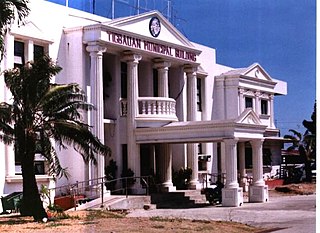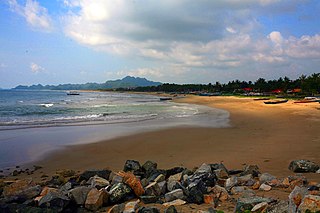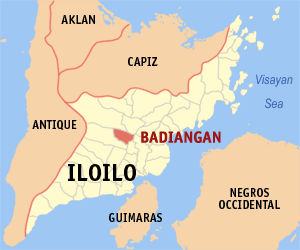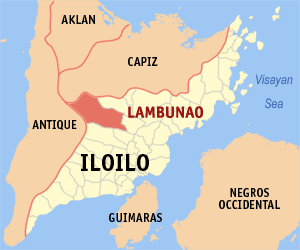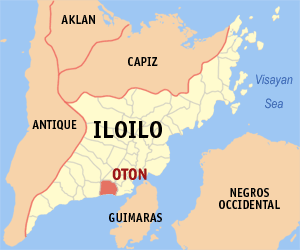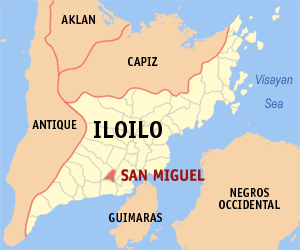Calinog | |
|---|---|
| Municipality of Calinog | |
 Map of Iloilo with Calinog highlighted | |
Location within the Philippines | |
| Coordinates: 11°08′N122°30′E / 11.13°N 122.5°E Coordinates: 11°08′N122°30′E / 11.13°N 122.5°E | |
| Country | |
| Region | Western Visayas (Region VI) |
| Province | Iloilo |
| District | 3rd district of Iloilo |
| Founded | 1763 |
| Barangays | 59 (see Barangays) |
| Government | |
| • Type | Sangguniang Bayan |
| • Mayor | Francisco L. Calvo |
| • Vice Mayor | Renato Casinao |
| • Congressman | Lorenz R. Defensor |
| • Electorate | 38,532 voters (2019) |
| Area | |
| • Total | 274.55 km2 (106.00 sq mi) |
| Population (2015 census) [3] | |
| • Total | 60,413 |
| • Density | 220/km2 (570/sq mi) |
| Economy | |
| • Income class | 1st municipal income class |
| • Poverty incidence | 28.3% (2015) [4] |
| • Revenue (₱) | 142,242,009.26 (2016) |
| Time zone | UTC+8 (PST) |
| ZIP code | 5040 |
| PSGC | |
| IDD : area code | +63 (0)33 |
| Climate type | tropical climate |
| Native languages | Kinaray-a language Hiligaynon Capiznon Ati Tagalog |
| Website | www |
Calinog, officially the Municipality of Calinog, (Hiligaynon : Banwa sang Calinog, Kinaray-a : Banwa kang Calinog, Tagalog : Bayan ng Calinog), is a 1st class municipality in the province of Iloilo, Philippines. According to the 2015 census, it has a population of 60,413 people. [3]

The Hiligaynon language, also often referred to by most of its speakers simply as Ilonggo, is an Austronesian regional language spoken in the Philippines by about 9.1 million people, mainly in Western Visayas and Soccsksargen, most of whom belong to the Hiligaynon people. It is the second-most widely spoken language and belongs to the Bisayan languages, and is more distantly related to other Philippine languages.

TagalogTagalog pronunciation: [tɐˈɡaːloɡ]) is an Austronesian language spoken as a first language by a quarter of the population of the Philippines and as a second language by the majority. Its standardized form, officially named Filipino, is the national language of the Philippines, and is one of two official languages alongside English.

Iloilo is a province located in the region of Western Visayas in the Philippines. Iloilo occupies a major southeast portion of the Visayan island of Panay and is bordered by the province of Antique to the west, Capiz to the north, the Jintotolo Channel to the northeast, the Guimaras Strait to the east, and the Iloilo Strait and Panay Gulf to the southwest.





